

West India Offshore
Laxmi Ridge & Laxmix Geographic basin
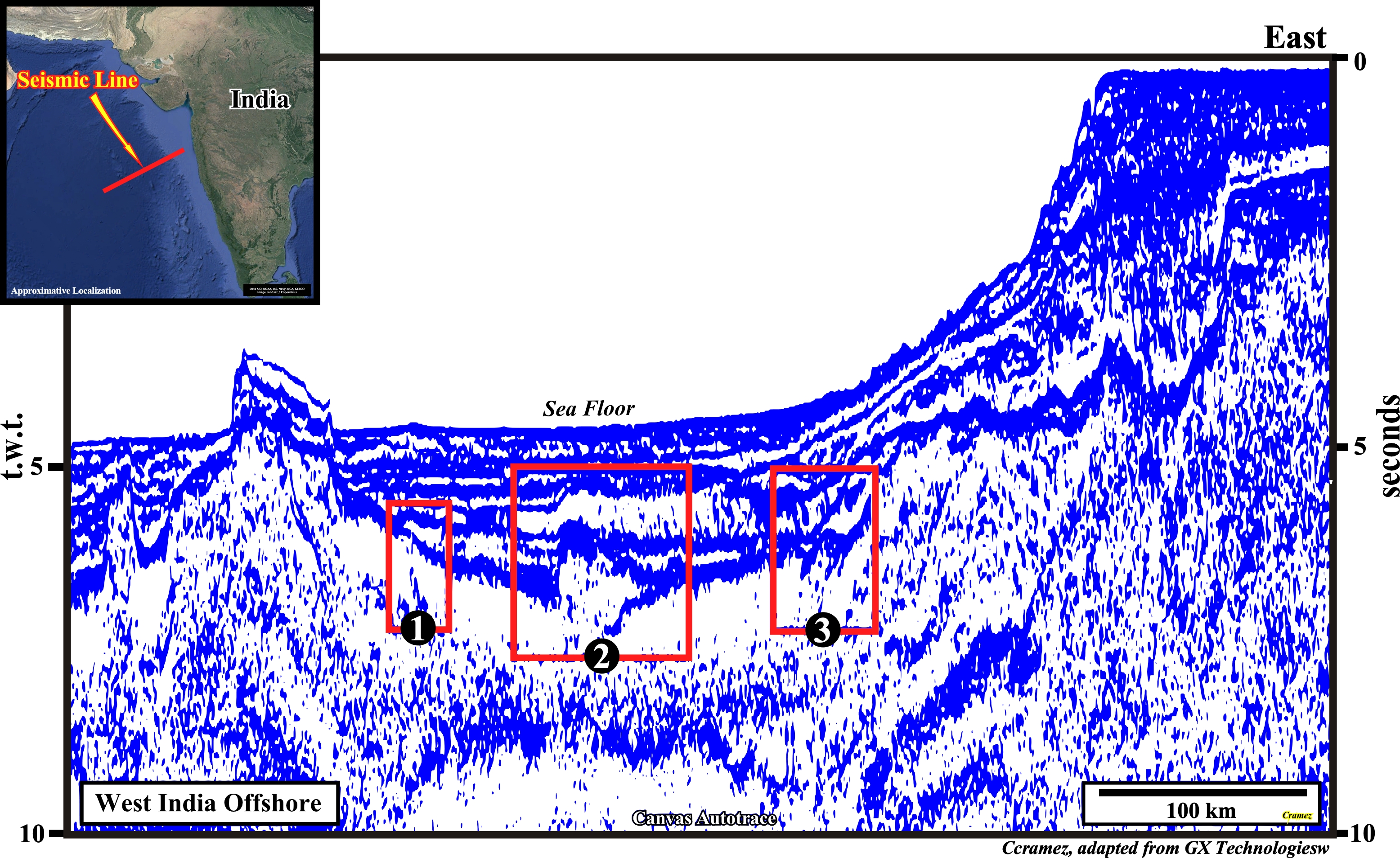
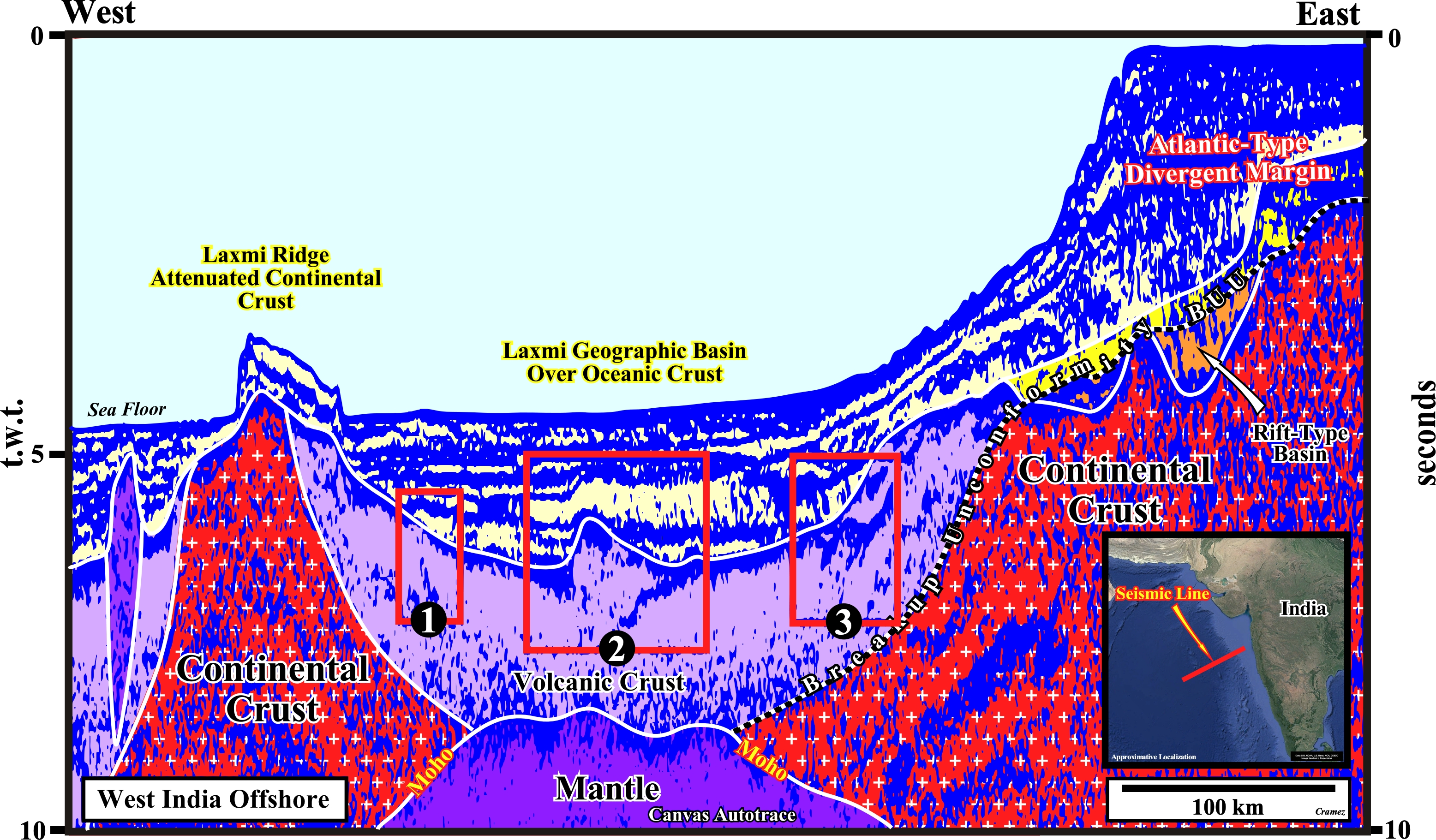
On this tentative geological interpretation, the Moho (discontinuity defining the transition between the Earth's crust and mantle, where we observe a sudden increase in the speeds of the longitudinal seismic waves, which go from 6-7 km/s to around 8 km/s) is, clearly, recognized in the lower central part of the autotrace. Eastward, above the breakup unconformity, which separates the lengthened Gondwana continental crust (rift-type basins included), the lower volcanic and the upper clastic continental Atlantic-type divergent margin developed. The clastic margin was, primarily, induced by the second (post Pangea) 1st order eustatic cycle, while the volcanic margin, composed, mainly, by lava flows (SDRs), is associated with post-breakup sub-aerial expansion centers as illustrated on the next autotrace details.
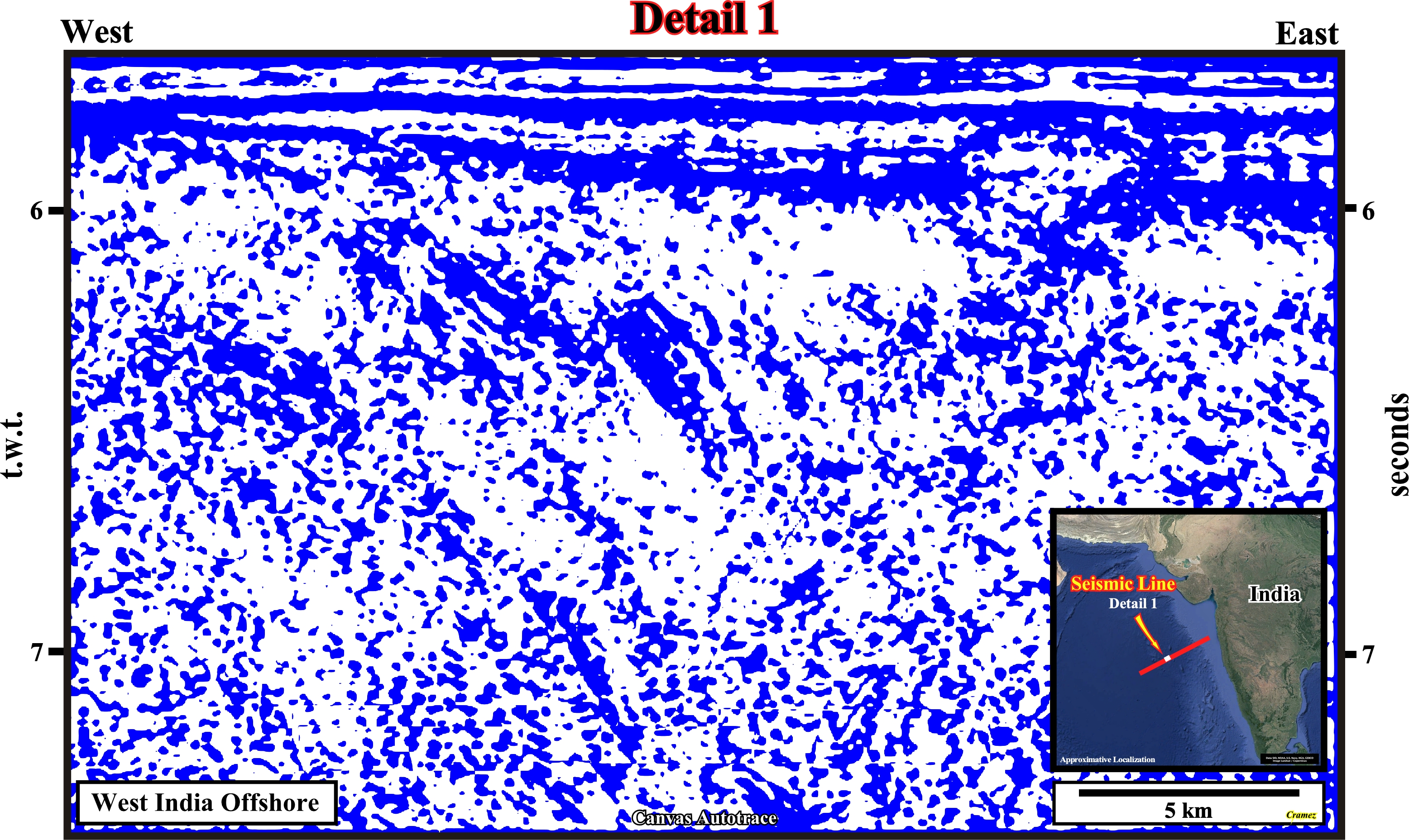
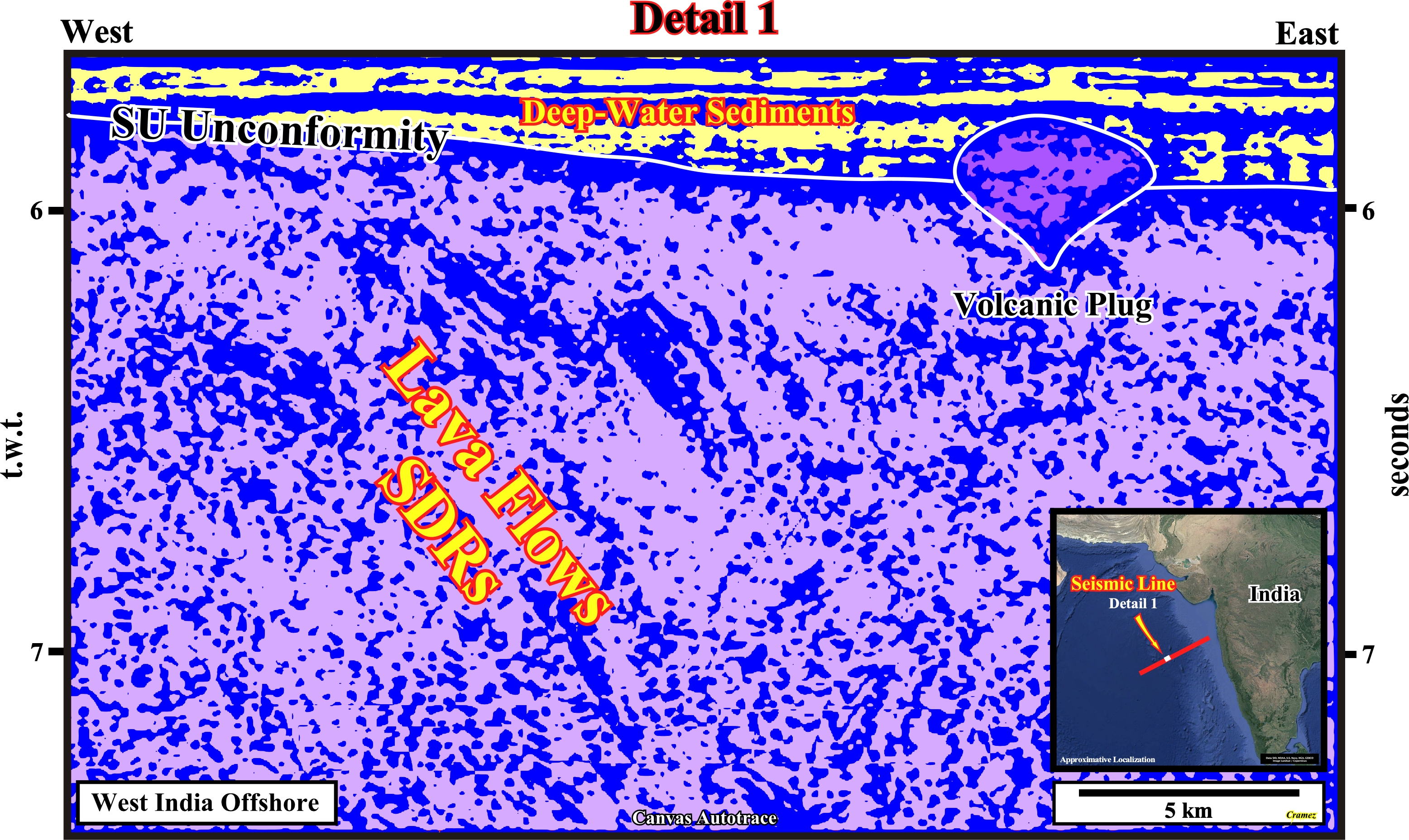
On this Canvas autotrace, below the SU unconformity, which underlines the bottom of the distal deep-water sediments of the clastic Atlantic-Type divergent margin, the volcanic margin is, clearly, recognized. It is s mainly, composed by SDRs, i.e., by lava-flows tilted and thickening seaward in direction of the expansion centers, which are, often, materialized by sheeted dike complexes (series of sub-parallel intrusions of igneous rocks forming a layer within the oceanic crust). In fact, when the sheeted dykes outcrop at the Earth's surface the lava can flows away of the spreading center tining outward. On the contrary, when the sheeted dykes outcrop at the sea floor, the lava effused from the sheet dykes is frozen (solidified), since lava cannot flow under water forming pillow lava.
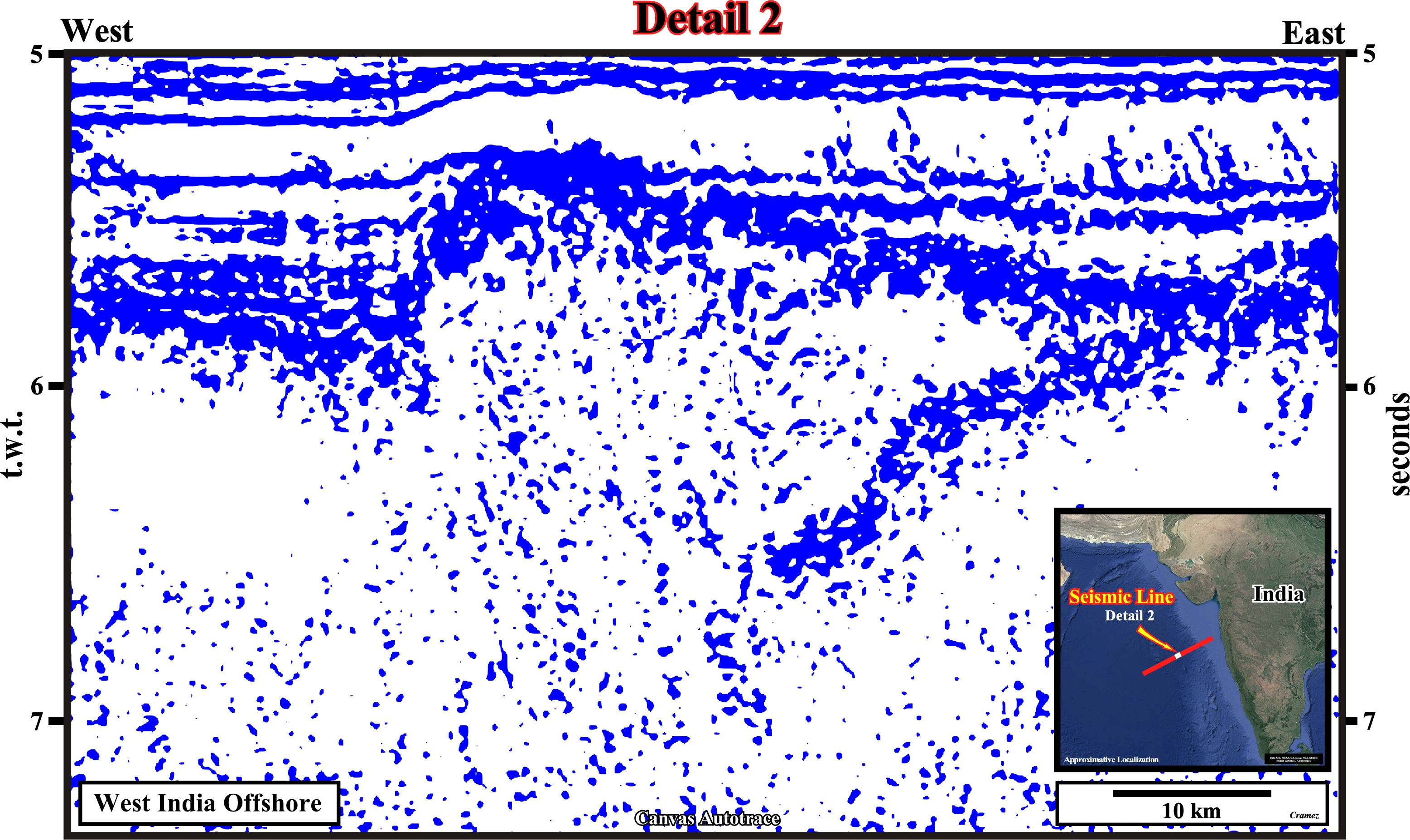
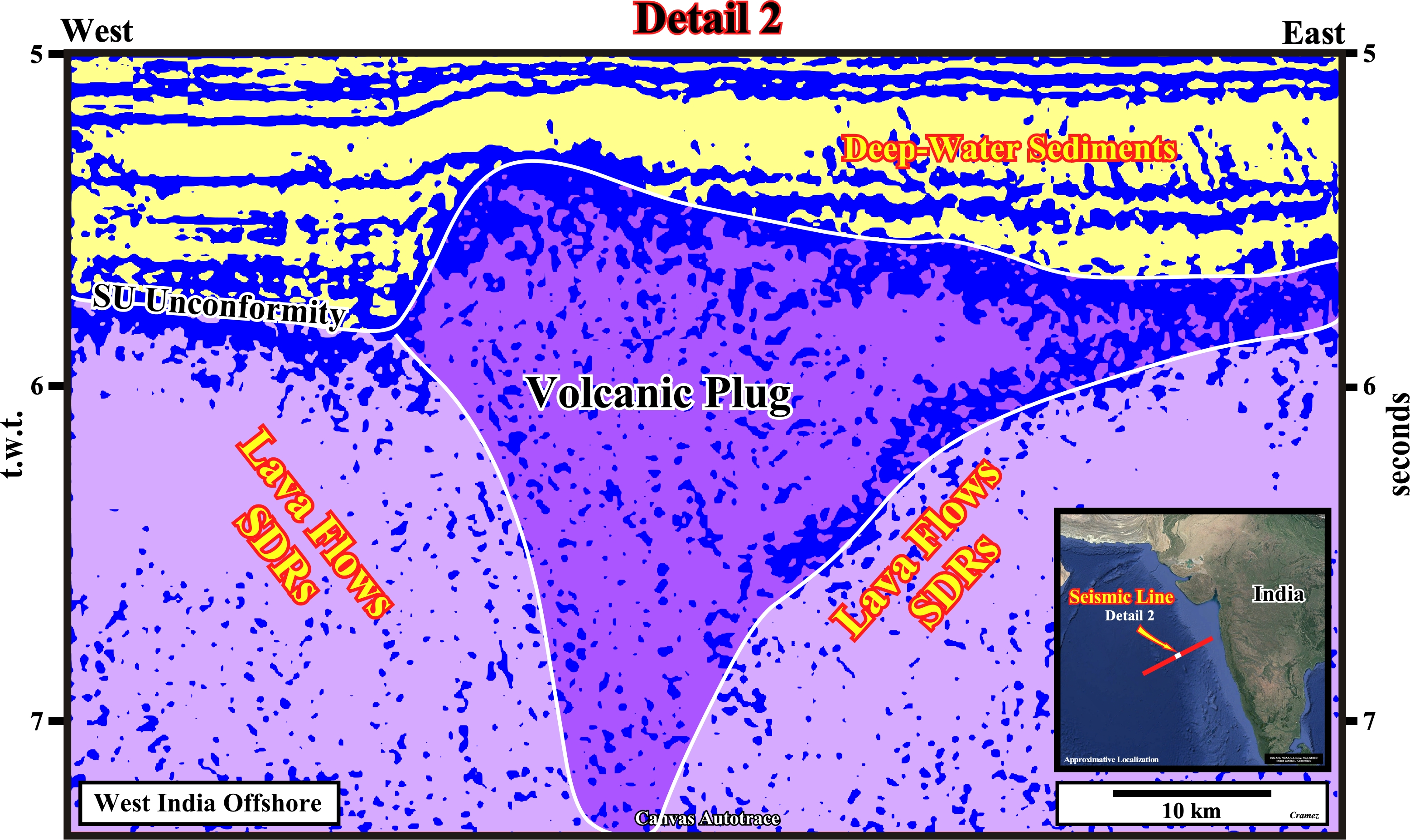
On this detail of the autotrace of the regional line of the West India offshore crossing the Laxmi ridge, below the SU unconformity, a volcanic plug (geological object object formed when magma when hardens within a fracture of then crust, generally, volcanic crust allowing hot lava, volcanic ash or gases to escape toward the surface) and SDRs are recognized. The SDRs has an opposite vergence each side of the volcanic plug, suggesting the volcanic plug could corresponds to a central expansion center (where seafloor spreading occurs, i.e., where new volcanic or oceanic crust is formed and then, gradually, moves away).
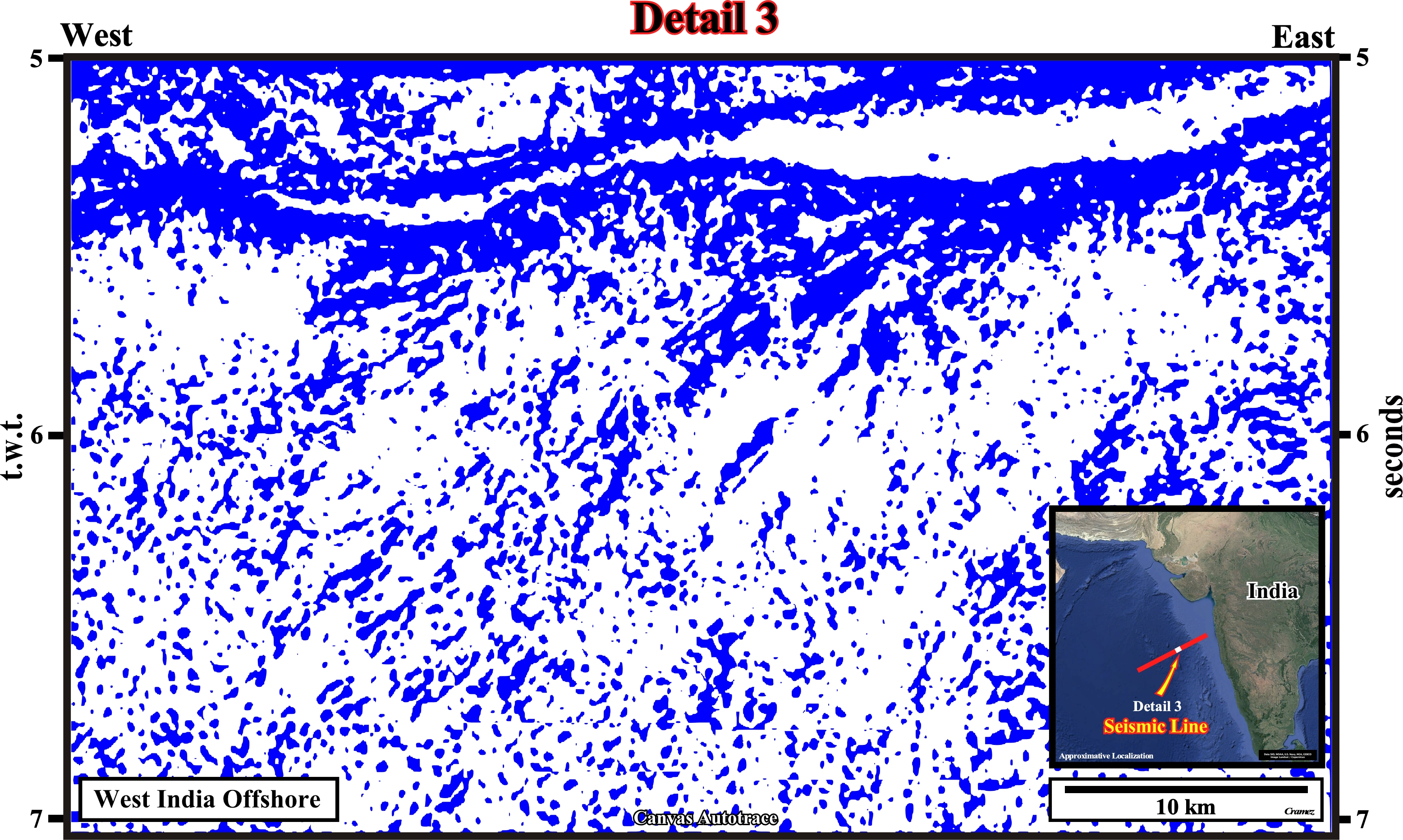
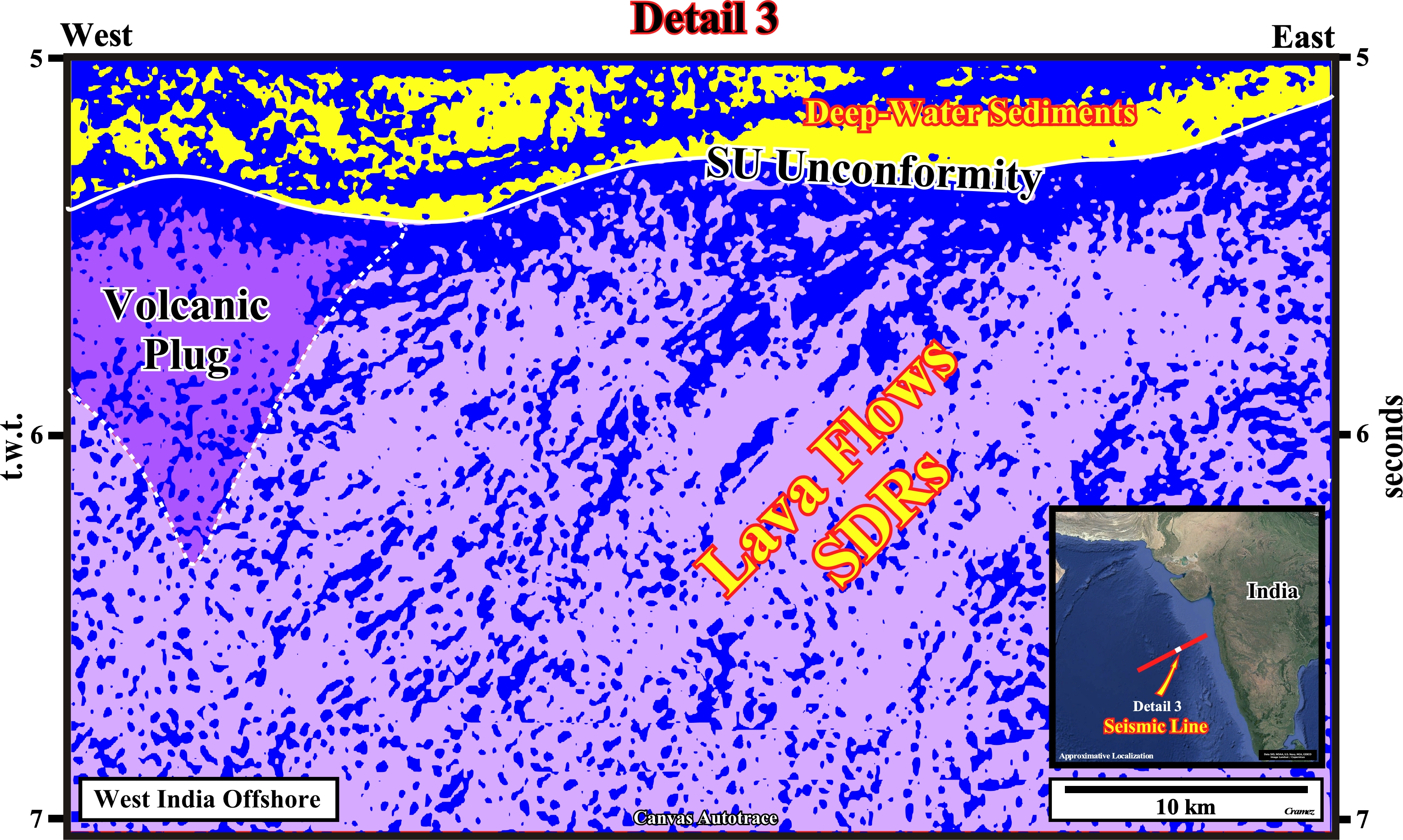
The signature of the SDRs (lava-flows tilted and thickening in direction of the spreading center), below the SU unconformity (limit between the volcanic and the clastic Atlantic-type divergent margin), seems to corroborate this tentative geological interpretation. Notice, a spreading center, from where lava flows outward, occurs where two lithological plates moving away from each other allowing magma from the upper mantle to rise to surface. In other words, SDRs represent, in a sub-aerial environment, the gradually crustal accretion of each lithological plate.
Send E-mails to carlos.cramez@bluewin.ch with comments and suggestions to improve this atlas.
Copyright © 2001 CCramez
Last update:
2022